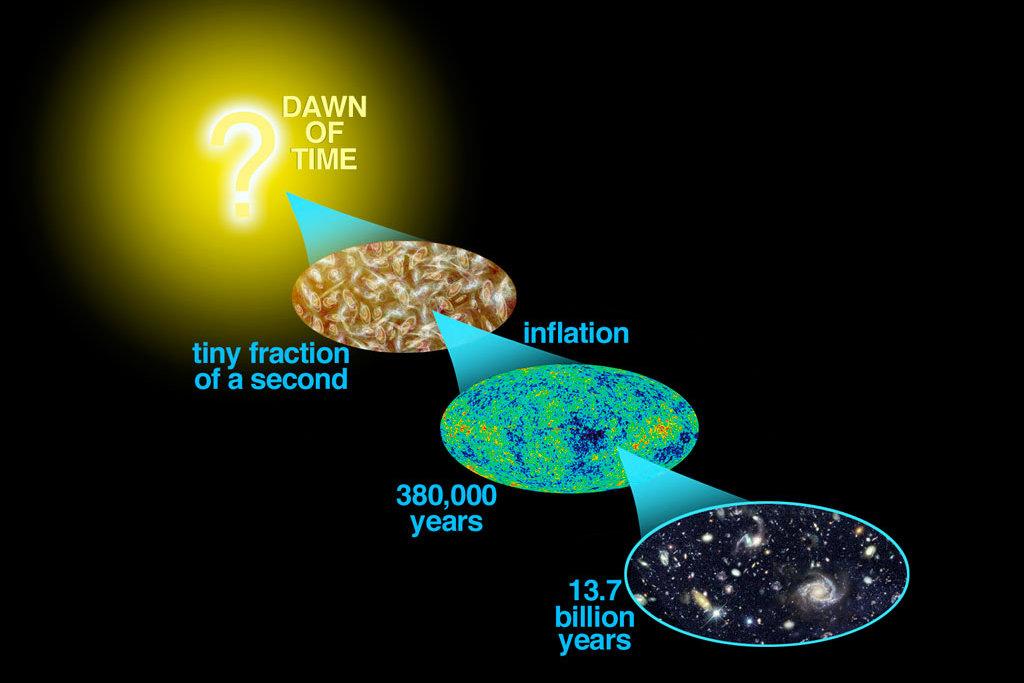
Model of the Big Bang theory. (NASA)
British astronomer Sir Fred Hoyle was skeptical of the idea that our universe formed following a rapid expansion billions of years ago and derisively called this hypothesized event the “Big Bang” in 1949. It was a catchy name and though Hoyle scorned the theory, he unwittingly helped popularize it.
Would anyone name a TV show “The Everywhere Stretch Theory” or the ”Homogeneous Universe of Constant Mass and Growing Radius"?
Perhaps not, but some say those names would more accurately describe the theory.
Georges Lemaître, a Roman Catholic priest and astronomer, first gave form to the Big Bang theory. He wrote a paper that, when translated from French, is titled “A Homogeneous Universe of Constant Mass and Growing Radius Accounting for the Radial Velocity of Extragalactic Nebulae.”
In the Calvin and Hobbes comic strip, the Big Bang is called the “Horrendous Space Kablooey” (HSK). HSK probably isn’t much more accurate than “Big Bang,” however.
In 1993, Sky and Telescope magazine announced a contest to rename the Big Bang. The judges, among whom was famed astronomer and television personality Carl Sagan, decided none of the 13,099 submissions was better than “Big Bang.” Suggestions included Jurassic Quark, The Grand Expansion, The Hubble Bubble, Portrait of the Universe as a Young Bam, and The Big Boot, according to an Associated Press article from that time.
One model of the Big Bang theory is called the Lambda Cold Dark Matter (Lambda-CDM) model. “It is frequently referred to as the standard model of Big Bang Cosmology,” according to a University of Heidelberg paper. “It is the simplest model that is in general agreement with observed phenomena.” Lambda represents the cosmological constant, associated in modern field theory with the energy density of the vacuum.
The Lambda-CDM attempts to explain the existence of the cosmic microwave background (radiation from the Big Bang that scientists measure to understand the time shortly after the Big Bang), the expansion of the universe, the scale and structure of galaxy clusters, and the distribution of elements in the observable universe.
See the video by MinutePhysics above for more on the inaccuracy of the name “Big Bang.”
MinutePhysics suggests “The Everywhere Stretch Theory,” as a more accurate alternative. It also suggests a more accurate name for “singularity,” which is the perplexing thing of small size and great density out of which the Big Bang may have stretched. MinutePhysics said a “singularity,” is not necessarily singular in space and time and suggests instead the less authoritative name “The point of the Everywhere Stretch where we don’t know what we’re talking about.”




